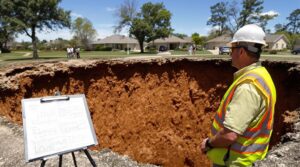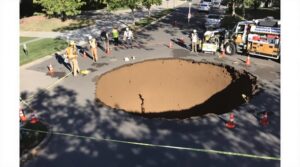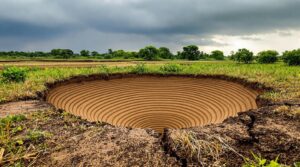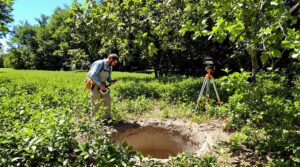Preventing sinkholes requires systematic monitoring and proactive maintenance. Property owners should conduct regular inspections for ground depressions, structural cracks, and drainage irregularities. Proper water management, including maintenance of drainage systems and prevention of water pooling, is essential. Professional geological assessments can identify high-risk areas and subsurface anomalies. Advanced detection technologies, such as ground-penetrating radar and satellite monitoring, enhance prevention strategies. Understanding these fundamentals establishes a foundation for thorough sinkhole mitigation.
Key Takeaways
- Maintain proper drainage systems and fix any leaks promptly to prevent water from eroding soil underneath structures.
- Conduct regular property inspections to identify early warning signs like ground depressions, cracks, or unusual water patterns.
- Plant vegetation with deep root systems to stabilize soil and reduce erosion in areas prone to sinkholes.
- Avoid placing excessive weight on soil through heavy machinery or large structures in susceptible areas.
- Consult geological experts to assess property risk and implement appropriate preventive measures based on local soil conditions.
Understanding Early Warning Signs of Ground Instability
Early detection of ground instability requires vigilant observation of multiple physical indicators that can signal potential sinkhole formation or landslide risk.
Key warning signs include the appearance of tension cracks at slope tops, damaged drainage systems, and substantial debris accumulation from slope erosion. Surface deformation manifests through visible depressions, water ponding in new areas, and disruption of buried utilities.
Structural indicators of ground movement include compromised building integrity, such as cracks in foundations, walls, or floor slabs, along with doors and windows that no longer function properly. The risk of slope failure significantly increases during periods of heavy rainfall infiltration.
Slope instability often presents through tilted structures, including fences, utility poles, and trees. The presence of storm-water drainage changes on slopes, progressive tree lean, and the separation of walkways from buildings further indicate potential ground instability.
Additionally, bulging ground at slope bases and widening cracks in paved surfaces serve as critical indicators requiring immediate professional assessment.
Essential Infrastructure Maintenance Steps

Implementing extensive infrastructure maintenance protocols serves as the foundation for effective sinkhole prevention in urban and developed areas. Regular infrastructure inspections and thorough maintenance policies enable early detection of potential subsurface issues before they escalate into hazardous sinkholes.
Critical maintenance steps include systematic assessment of aging infrastructure, particularly underground utility systems and roadways. Ground penetrating radar (GPR) surveys and detailed examinations of pavement surfaces help identify subsurface anomalies and structural weaknesses. Areas with limestone geology require especially rigorous monitoring due to their higher susceptibility to sinkhole formation.
Infrastructure maintenance teams must vigilantly monitor for warning signs such as surface cracks, depressions, and irregular settling.
Maintenance policies should encompass routine evaluation of underground pipes, drainage systems, and soil stability. These assessments must be documented and tracked to establish patterns and predict potential problem areas.
Advanced Detection Technologies for Ground Assessment
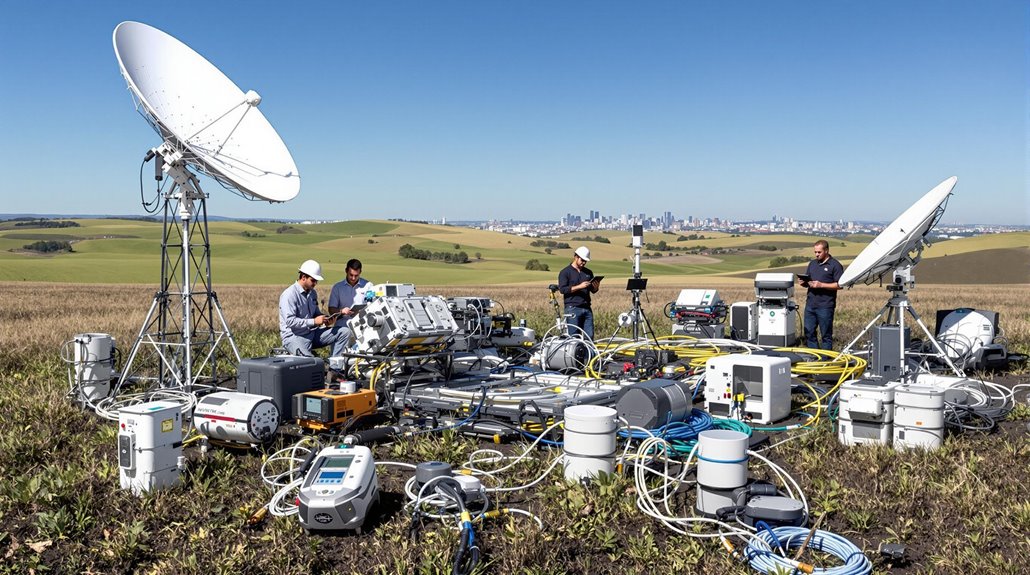
Modern ground assessment technologies have revolutionized the field of sinkhole detection and prevention through sophisticated monitoring systems and data analysis. Satellite monitoring combined with geophysical techniques, including Ground-Penetrating Radar and electrical resistivity measurements, enables thorough subsurface evaluation with unprecedented accuracy.
The integration of AI and machine learning with these technologies has enhanced detection capabilities markedly. Fibre optics systems provide real-time subsidence monitoring, while IoT sensors collect environmental data vital for anomaly detection. The Land Displacement Monitoring service analyzes vast areas to identify potential ground deformation risks.
Advanced predictive analytics process this information alongside InSAR data, generating detailed subsurface analysis with millimeter-scale precision. Data visualization tools transform complex geological and hydrological information into actionable insights.
This technological convergence allows for early warning systems through automated monitoring platforms, enabling stakeholders to implement preventive measures before sinkholes develop. The combination of these advanced detection methods guarantees more reliable risk assessment and proactive ground stability management.
Proper Underground Space Planning and Management
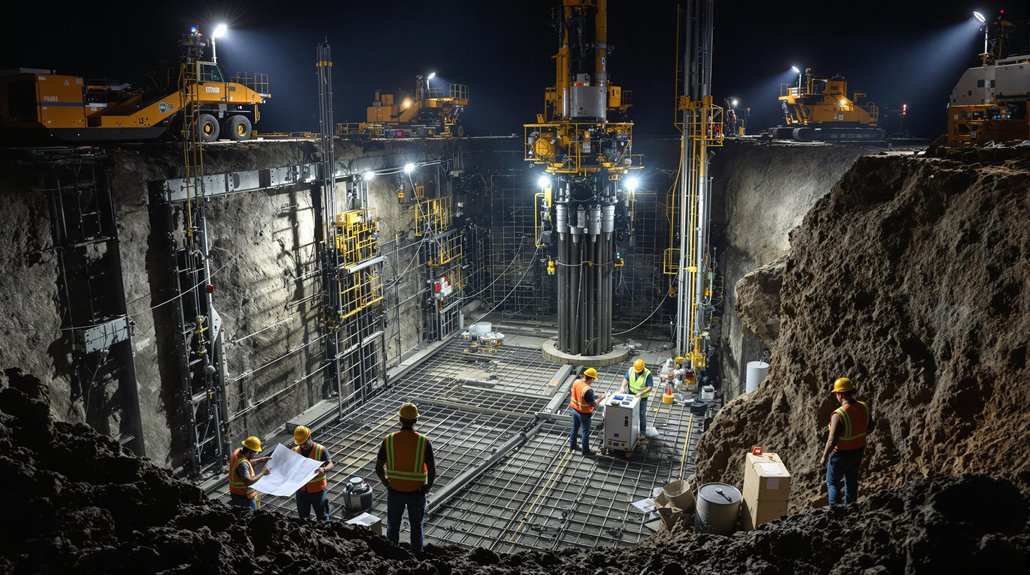
Effective underground space planning and management requires a thorough, multi-layered approach that integrates groundwater control, structural reinforcement, and regulatory compliance. This extensive strategy encompasses strict underground zoning regulations and scientifically-based space utilization protocols to minimize sinkhole risks.
The implementation of proper management systems involves coordinated efforts across multiple domains. Engineering solutions, including grouting and soil reinforcement, work in conjunction with sophisticated groundwater monitoring networks to maintain structural integrity.
Urban planners must incorporate underground stability assessments into their development frameworks, while regulatory bodies enforce construction standards and geological surveys.
Advanced underground space management also requires the integration of public infrastructure considerations. This includes the strategic placement of transportation networks, utility systems, and pedestrian pathways, all designed to distribute structural loads effectively.
These elements must operate within a robust legislative framework that prioritizes geological stability and sustainable underground development practices.
Best Practices for Land Development and Construction
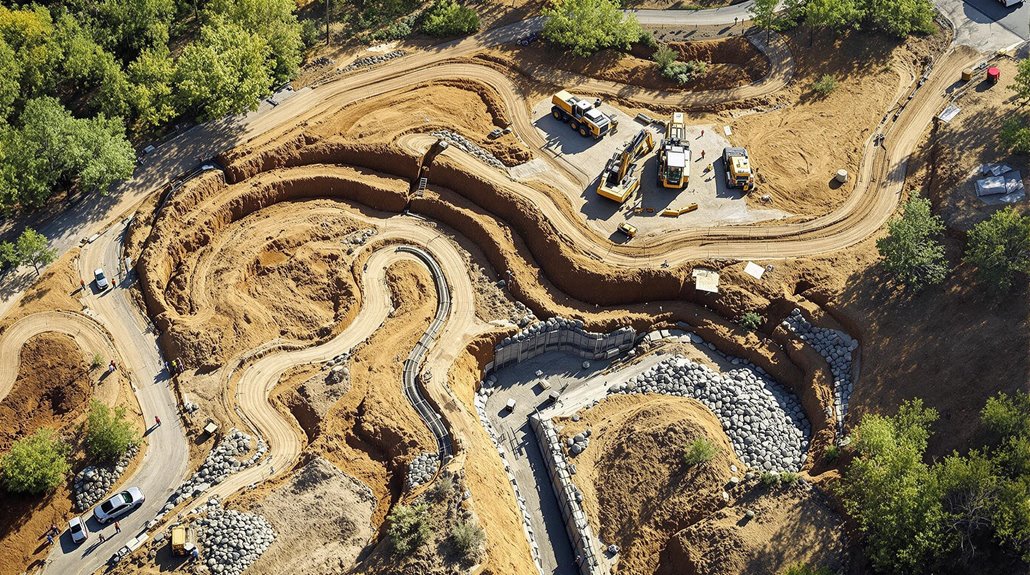
Successful land development and construction practices demand meticulous attention to geotechnical parameters and site-specific considerations. Initial site assessments must include thorough geological and hydrological studies to identify potential sinkhole risks, while utilizing geotechnical surveys to evaluate soil stability conditions.
Effective land development strategies incorporate design principles that work from the outside inward, optimizing lot configurations and space usage while implementing Building Information Modeling (BIM) for infrastructure planning.
Construction practices should focus on careful site grading, minimal excavation in susceptible areas, and installation of robust drainage systems that channel water away from vulnerable zones.
To guarantee structural integrity, developers must incorporate rock-supported foundations and reinforce underground utilities with protective layers.
Regular maintenance protocols, including frequent inspections of underground infrastructure and utility connections, help identify potential weaknesses before they develop into major problems. These preventive measures considerably reduce the risk of sinkhole formation in developed areas.
Critical Drainage System Management

The thorough management of drainage systems represents a critical defense against sinkhole formation in both urban and rural environments. Advanced drainage solutions include implementing permeable materials to reduce runoff and installing sophisticated systems that effectively channel water away from vulnerable areas. These measures help maintain stable groundwater levels and minimize soil erosion risks.
Regular monitoring using ground-penetrating radar and acoustic leak detection enables early identification of potential sinkhole formations. This technology, combined with strategic utility line sensors, allows municipalities to detect and address underground anomalies before they develop into hazardous sinkholes.
Environmental considerations further enhance prevention efforts through the establishment of vegetative buffers and erosion control measures during construction activities. Water management systems must account for geologic structure, groundwater flow patterns, and regolith thickness to guarantee ideal effectiveness.
Additionally, sustainable practices such as conservation cropping systems and proper nutrient management contribute to thorough sinkhole prevention strategies.
Professional Assessment and Remediation Strategies
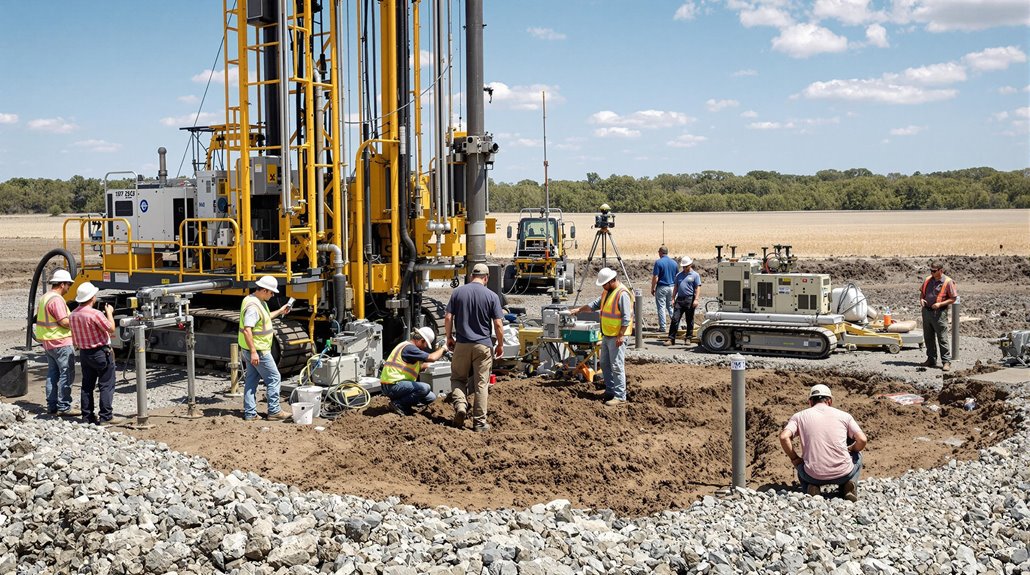
Professional assessment of potential sinkhole sites requires an extensive array of geotechnical exploration methods and specialized expertise.
Geotechnical assessments typically employ multiple investigation techniques, including borehole drilling, ground penetrating radar (GPR), and seismic surveys to evaluate subsurface conditions and identify potential sinkhole risks.
Once anomalies are detected, remediation strategies can be implemented based on site-specific findings. These may include pressure grouting to stabilize loose soil conditions, underpinning with piles to provide structural support, or complete removal and rebuilding of affected areas.
The selection of appropriate remediation methods depends on factors such as the type of sinkhole, soil composition, and structural considerations.
Ongoing monitoring remains vital throughout the remediation process to evaluate the effectiveness of implemented solutions.
Professional geotechnical engineers utilize sophisticated equipment and data analysis to ascertain that chosen strategies adequately address both immediate concerns and long-term stability requirements.
The Benefits Of Consulting A Public Adjuster
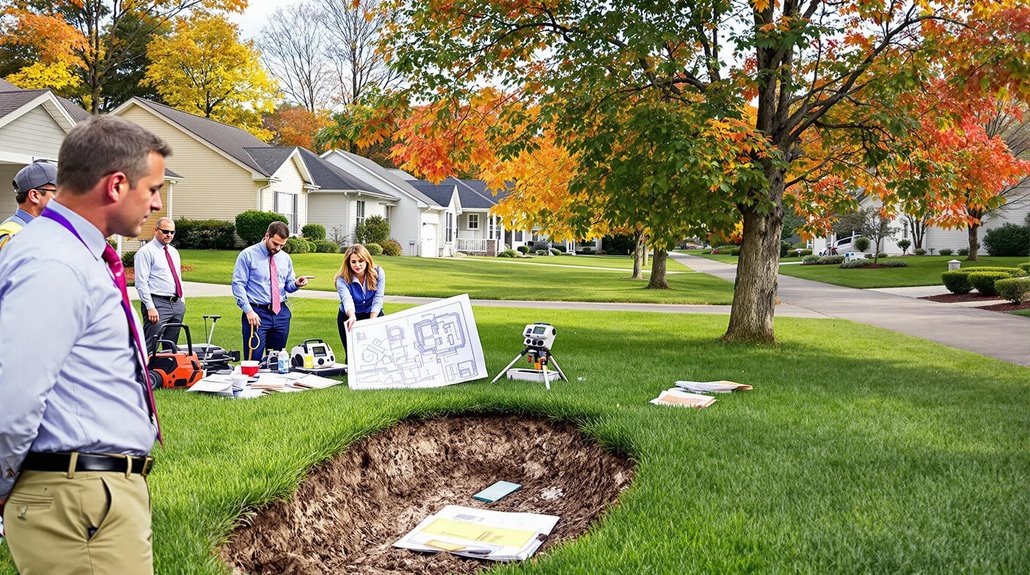
Public adjusters provide essential expertise in managing complex sinkhole insurance claims through their extensive understanding of coverage policies and damage assessment protocols.
Their objective evaluation and documentation of sinkhole damage, combined with professional negotiation skills, typically result in higher claim settlements compared to self-managed claims.
The involvement of a public adjuster streamlines the claims process by managing documentation requirements, conducting thorough damage assessments, and advocating for appropriate compensation on behalf of the policyholder.
Operating on a contingency fee basis, public adjusters charge between 5-20% of the final settlement amount while working to maximize insurance payouts for property owners.
Expertise In Insurance Claims
When dealing with sinkhole-related property damage, consulting a licensed public adjuster can greatly improve claim outcomes and settlement amounts. These professionals possess specialized knowledge in insurance claim strategies and understand how to protect policyholder rights throughout the claims process.
Public adjusters conduct thorough property inspections to document all damages, analyze insurance policies for maximum coverage opportunities, and present compelling evidence to support claims. Their expertise enables them to accurately estimate repair costs and negotiate effectively with insurance companies to secure fair settlements.
They understand complex policy language and can identify overlooked coverage provisions that benefit the policyholder.
Studies show that claims handled by public insurance adjusters result in settlements up to 500% higher for non-catastrophic events compared to unrepresented claims.
Before hiring a public adjuster, property owners should verify licensing status, review consumer feedback, and carefully examine the proposed contract terms, including fee structures and scope of services.
Objective Damage Assessment
Accurate damage assessment forms the cornerstone of successful sinkhole claims and proper remediation efforts. Public adjusters employ objective assessment techniques to evaluate structural damage, ground depressions, and subtle indicators of subsurface activity. These unbiased evaluation methods help prevent both underestimation and overestimation of damage, ensuring fair compensation for property owners.
Professional assessors document evidence systematically, identifying minor cracks, foundation issues, and soil conditions that might escape untrained observation. This detailed documentation proves invaluable during insurance negotiations and helps establish the full scope of necessary repairs.
Public adjusters coordinate with engineering specialists to conduct thorough site investigations, utilizing their expertise to distinguish sinkhole damage from other forms of structural deterioration. This all-encompassing approach supports accurate damage quantification and facilitates appropriate remediation strategies.
Streamlined Claim Process
Filing insurance claims for sinkhole damage requires extensive documentation and precise communication with insurers, making the expertise of public adjusters invaluable for streamlining the process. Public adjusters implement strategic claim documentation techniques while managing all aspects of policyholder communication and negotiation strategies with insurance companies. Their ability to identify hidden property damages often results in significantly higher settlement amounts compared to initial insurance company offers.
| Process Component | Public Adjuster Benefits |
|---|---|
| Documentation | Manages paperwork, guarantees timely submission |
| Communication | Handles insurer interactions, coordinates inspections |
| Claims Navigation | Provides technical expertise, expedites resolution |
| Professional Advocacy | Represents interests, maximizes claim value |
Their professional oversight reduces administrative burdens on policyholders while guaranteeing thorough assessment of damage claims. By leveraging their expertise in policy interpretation and claim procedures, public adjusters facilitate efficient processing and fair settlement negotiations, ultimately optimizing outcomes for property owners affected by sinkhole damage.
Higher Claim Payouts & Settlements
Public adjusters greatly enhance the potential for higher insurance claim settlements in sinkhole damage cases, with documented evidence showing substantially larger payouts compared to claims filed without professional representation.
Their expertise in claim negotiation and detailed understanding of insurance policies enables them to identify and address potential policy exclusions that could limit compensation.
These licensed professionals systematically evaluate damage, prepare extensive documentation, and utilize their technical knowledge to substantiate claims effectively.
Their specialized experience in handling sinkhole-related cases proves particularly valuable when confronting complex structural damage assessments.
By leveraging their industry expertise and negotiation skills, public adjusters can secure maximum settlements while maneuvering intricate claim procedures.
Their proven track record demonstrates consistent success in obtaining favorable outcomes for policyholders facing sinkhole-related property damage.
With an average salary of $61,465 annually, professional claims adjusters bring valuable expertise and dedication to securing fair compensation for property owners.
About The Public Claims Adjusters Network (PCAN)
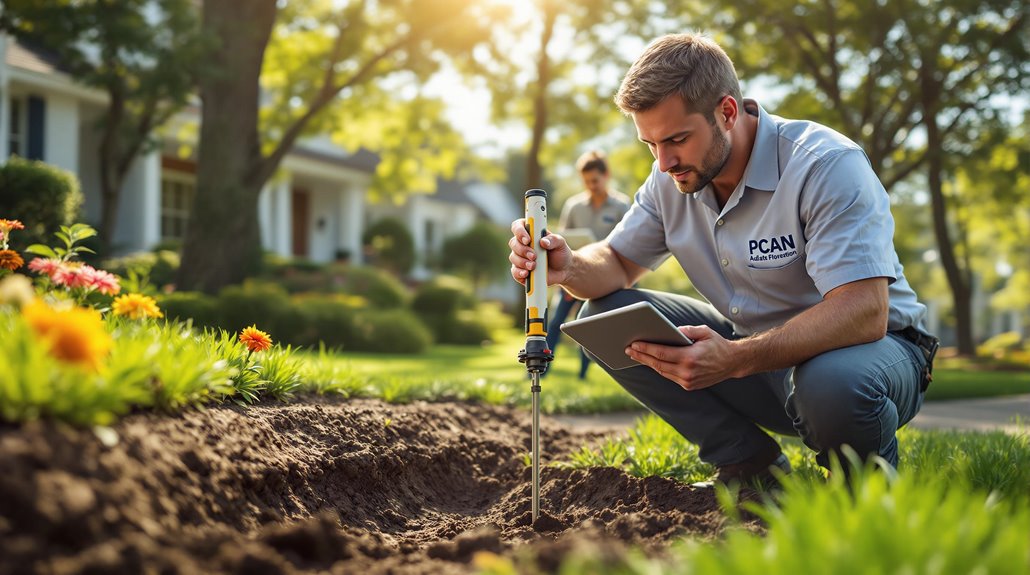
Professional claims adjusters form the backbone of the Public Claims Adjusters Network (PCAN), an organization dedicated to advocating for policyholders during insurance claims processes.
These licensed specialists work independently from insurance companies, ensuring unbiased claims advocacy and ideal settlements for property owners.
PCAN members possess extensive expertise in policy analysis, damage assessment, and settlement negotiations. Their all-encompassing services include detailed property inspections, documentation of damages, calculation of business interruption costs, and preparation of thorough claim submissions.
The network's adjusters maintain proficiency in both commercial and residential insurance matters.
Operating with legal and technical precision, PCAN adjusters validate claim legitimacy, analyze policy terms, and develop strategic approaches for each unique case.
They serve as intermediaries between policyholders and insurers, managing all aspects of communication and documentation throughout the claims process.
This systematic approach helps streamline proceedings while maximizing benefit recovery for property owners.
The network maintains strict ethical standards through bi-yearly audits and requires all members to follow a POLICYHOLDER FIRST code of conduct.
Frequently Asked Questions
How Much Does It Typically Cost to Fix a Sinkhole?
Sinkhole repair costs typically range from $1,200 to $828,000, depending on critical cost factors including size, depth, underlying infrastructure damage, required engineering studies, and repair method complexity.
Can Sinkholes Form Overnight Without Any Prior Warning Signs?
While 80% of sinkholes exhibit prior warning indicators, sudden formations can occur overnight due to subsurface void collapse, particularly when geological conditions and water-related factors align without visible surface manifestations.
Are Some Seasons More Likely to Trigger Sinkhole Formation?
Sinkhole formation intensifies during periods of extreme weather patterns, particularly when prolonged drought is followed by heavy rainfall, causing significant fluctuations in soil moisture levels and subsurface stability.
Does Homeowners Insurance Cover Sinkhole Damage?
Standard homeowners insurance policies exclude sinkhole damage under earth movement policy exclusions. Property owners must purchase specific sinkhole insurance coverage or endorsements for protection against sinkhole-related structural damage.
What Is the Average Size of a Residential Sinkhole?
Residential sinkhole dimensions vary considerably, but drainage areas average 67 acres, with typical flood-impact zones of 3 acres per sinkhole. Individual collapse features can range from feet to hundreds of feet.
References
- https://www.motivewith.com/en/get-motivated/understanding-sinkholes
- https://www.concretevisions.com/sinkhole-and-void-detection/how-to-prevent-sinkholes/
- https://www.tensarinternational.com/resources/articles/what-are-sinkholes
- https://www.nrcs.usda.gov/sites/default/files/2022-09/Sinkhole_Treatment_527_NHCP_CPS_2019.pdf
- https://evercor.com/blog/tips-tricks/preventing-and-repairing-sinkholes-on-commercial-properties/
- https://www.egeo.com.my/telltale-signs-of-a-distressed-slope/
- https://satsense.co/ground-subsidence/
- https://www.tensar.co.uk/resources/articles/what-are-sinkholes
- https://www.fema.gov/press-release/20250121/fact-sheet-recognize-landslide-warning-signs
- https://soundnativeplants.com/wp-content/uploads/Unstable_slopes.pdf

